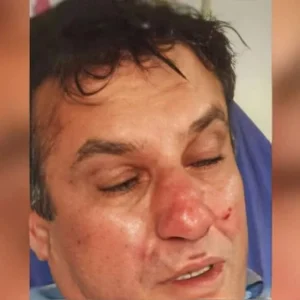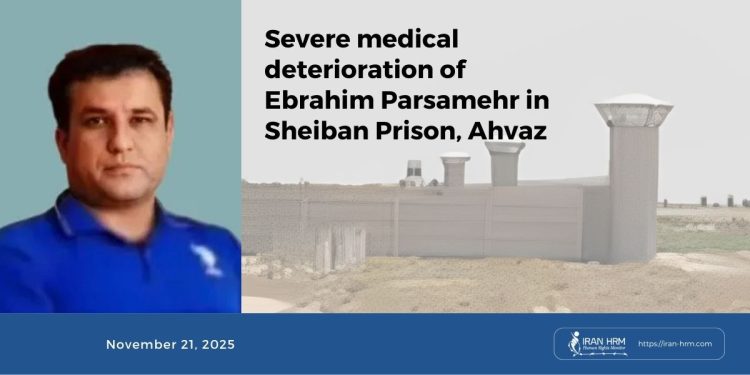In recent weeks, a new wave of preventable deaths and severe medical deterioration has emerged across prisons under the ruling regime in Iran. These incidents share one core pattern: deliberate medical deprivation that leaves prisoners without treatment until they reach irreversible harm. The death of Amir Neysi in Sheiban Prison, the worsening medical condition of attorney Ebrahim Parsamehr, and the hospitalization of Ahmad Naseri—now in a full coma—reflect a systematic structure in which access to treatment is withheld until death or permanent injury becomes inevitable. Earlier cases such as the death of Somayeh Rashidi in Evin Prison further underscore this long-standing pattern.
- The Preventable Death of Amir Neysi
Amir Neysi, born in 1998, spent six years of a 15‑year sentence in Sheiban Prison. He suffered from a severe infection caused by an untreated “ingrown hair.” What began as a simple condition progressed into widespread systemic infection due to prolonged medical neglect. Cellmates reported his high fever, loss of mobility, repeated fainting, and severe pain. Despite persistent pleas for medical care, prison authorities refused to approve transfer to a hospital. When he was finally taken to the infirmary—too late—he died the same night. His case is a clear example of a fully preventable death resulting from systematic deprivation.
- Immediate Risk to the Life of Attorney Ebrahim Parsamehr
 Ebrahim Parsamehr, a licensed attorney from Bagh‑Malek, remains imprisoned despite being formally acquitted in court. Arrested violently in June 2025, he spent four months subjected to torture in intelligence safe houses. Although cleared of all charges by the Ahvaz Revolutionary Court, he continues to be held under the unlawful pretext of “ongoing investigation.” Parsamehr suffers from diabetes and a severe dental and facial infection. His face is swollen, he experiences fever and numbness, and he has not received medication or specialist care. Security agencies have repeatedly blocked his transfer to a hospital. His life is now at immediate and serious risk.
Ebrahim Parsamehr, a licensed attorney from Bagh‑Malek, remains imprisoned despite being formally acquitted in court. Arrested violently in June 2025, he spent four months subjected to torture in intelligence safe houses. Although cleared of all charges by the Ahvaz Revolutionary Court, he continues to be held under the unlawful pretext of “ongoing investigation.” Parsamehr suffers from diabetes and a severe dental and facial infection. His face is swollen, he experiences fever and numbness, and he has not received medication or specialist care. Security agencies have repeatedly blocked his transfer to a hospital. His life is now at immediate and serious risk.
- Critical Condition of Ahmad Naseri in Sepidar Prison
Ahmad Naseri, aged 36, was left untreated in Sepidar Prison despite days of fever, infection, and loss of consciousness. Witnesses say he collapsed several times, yet guards dismissed his condition as “pretending.” When finally transferred, he was admitted to Imam Hospital in a full coma, where he remains. His family reports that prison officials attempted to frame the incident as “suicide” to conceal their medical negligence, a recurrent tactic in similar cases.
Legal Analysis
These cases demonstrate multiple violations of Iran’s binding international obligations:
– Article 3 of the Universal Declaration of Human Rights: the right to life.
– Article 5 UDHR: prohibition of torture and cruel, inhuman, or degrading treatment.
– Article 9 UDHR: prohibition of arbitrary detention, violated in Parsamehr’s continued imprisonment post‑acquittal.
– Article 10 ICCPR: obligation to treat detainees with humanity.
– Article 12 ICESCR: the right to the highest attainable standard of health.
Conclusion
The recent deaths and medical emergencies in Sheiban and Sepidar Prisons confirm that medical deprivation is not an administrative failure but a deliberate strategy of punishment and attrition. Without independent oversight, prisoners remain exposed to slow, preventable, and systematic harm. The cases of Neysi, Parsamehr, and Naseri should be treated as urgent indicators of an institutionalized policy of eliminating detainees through medical neglect







